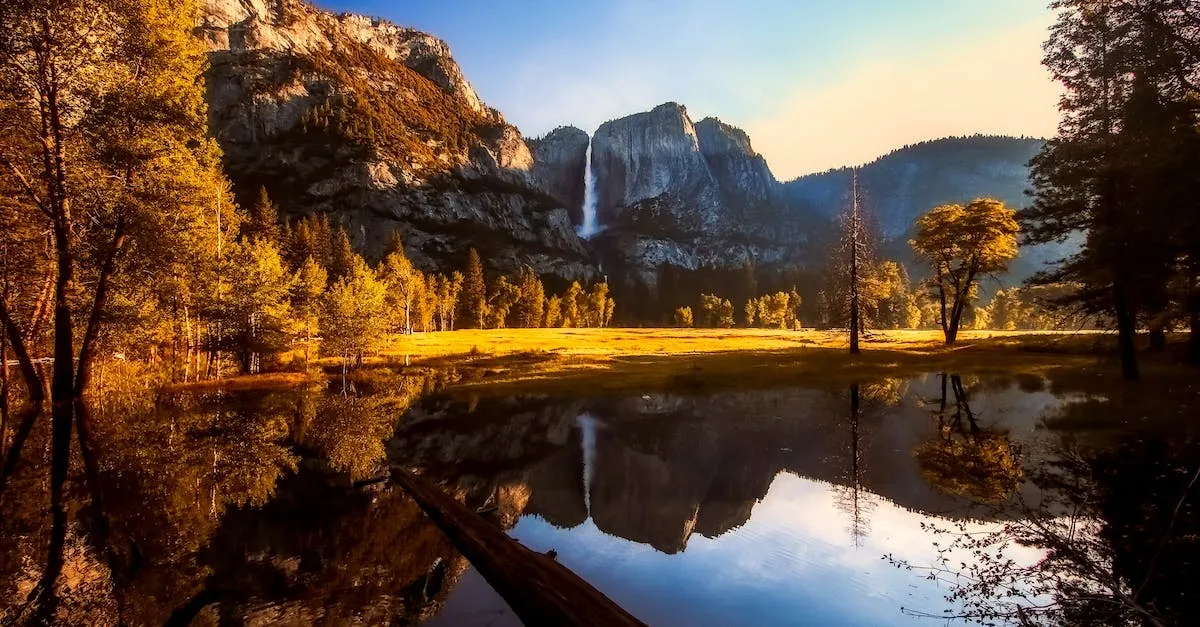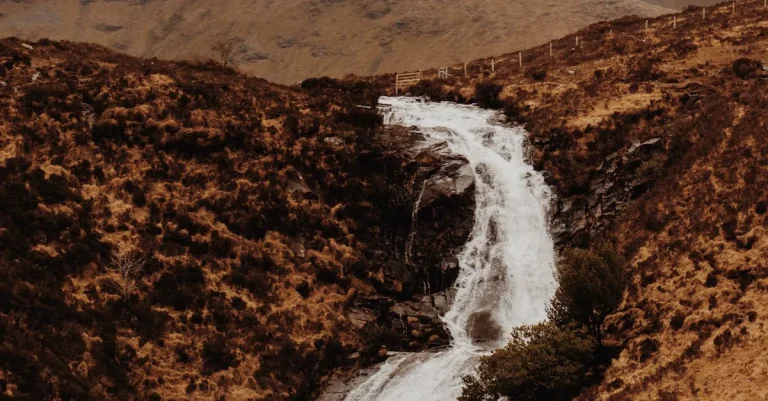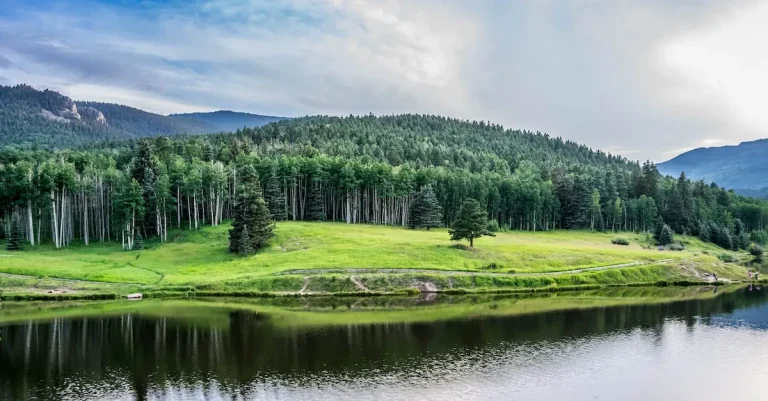Mountain Ranges In California: A Complete Visual Guide
California is home to some of the most famous and awe-inspiring mountain ranges in the United States. The soaring peaks and steep slopes have helped define the state’s landscape and culture. If you’re short on time, here’s a quick answer to your question: The major mountain ranges in California include the Sierra Nevada, Transverse Ranges, Peninsular Ranges, Cascade Range, and Coast Ranges, which stretch across the state in distinct geographic formations.
This comprehensive guide explores the major mountain ranges in California through detailed maps and descriptions of their locations, notable peaks, geographical features, and more.
The Mighty Sierra Nevada
The Sierra Nevada mountain range is a majestic and awe-inspiring natural wonder that stretches across eastern California. It is one of the most prominent mountain ranges in the state and offers breathtaking views and outdoor recreational opportunities for visitors and locals alike.
Location and Notable Peaks
The Sierra Nevada range is located in eastern California, running north to south for approximately 400 miles. It spans several counties, including Placer, El Dorado, Alpine, and Inyo, among others. One of the most famous peaks in the Sierra Nevada is Mount Whitney, which stands at an impressive elevation of 14,505 feet, making it the highest point in the contiguous United States.
Other notable peaks in the range include Mount Shasta, Mount Williamson, and Mount Langley.
The Sierra Nevada range is also home to several national parks, including Yosemite National Park and Sequoia National Park, which attract millions of visitors each year. These parks offer a wide range of outdoor activities, such as hiking, camping, rock climbing, and wildlife watching.
Geography and Ecology
The Sierra Nevada range is characterized by its towering peaks, deep valleys, and pristine alpine lakes. It is a result of tectonic activity and the gradual uplift of the Earth’s crust over millions of years.
The range is home to a diverse range of ecosystems, including coniferous forests, subalpine meadows, and alpine tundra.
One of the most unique features of the Sierra Nevada is the presence of ancient giant sequoia trees, some of which are over 3,000 years old and among the largest living organisms on Earth. These majestic trees can be found in groves throughout the range, and their sheer size and beauty leave visitors in awe.
The Sierra Nevada is also home to a wide variety of wildlife, including black bears, mule deer, mountain lions, and a myriad of bird species. It is a haven for outdoor enthusiasts and nature lovers, offering endless opportunities for exploration and appreciation of the natural world.
If you’re planning a trip to California, make sure to include a visit to the Sierra Nevada mountain range in your itinerary. Whether you’re a hiker, a nature photographer, or simply someone who appreciates the beauty of the great outdoors, the Sierra Nevada will not disappoint.
So pack your hiking boots, grab your camera, and get ready to experience the breathtaking vistas and natural wonders of this incredible mountain range.
The Transverse Ranges
The Transverse Ranges are a unique and significant mountain range located in California. As the name suggests, these ranges run in a transverse or east-west direction, unlike most other mountain ranges that run north-south.
They span across a large portion of Southern California, from the coastal areas to the Mojave Desert.
Orientation
The Transverse Ranges are characterized by their orientation, which is perpendicular to the tectonic plate boundary. This unique geological feature has resulted in the formation of numerous fault lines, making the region prone to earthquakes.
The mountain ranges serve as a physical barrier between the coastal regions and the inland areas, creating distinct climate zones and influencing weather patterns.
Major Divisions
The Transverse Ranges can be divided into several major divisions, each with its own distinct characteristics. The Santa Ynez Mountains, located near Santa Barbara, offer breathtaking coastal views and are home to diverse flora and fauna.
The San Gabriel Mountains, situated northeast of Los Angeles, are known for their rugged peaks, deep canyons, and popular hiking trails. The San Bernardino Mountains, located east of Los Angeles, feature towering peaks and are a popular destination for skiing and snowboarding during the winter months.
Notable Peaks
The Transverse Ranges are home to several notable peaks, each offering its own unique experience for outdoor enthusiasts. Mount San Gorgonio, also known as “Old Greyback,” is the highest peak in Southern California, towering at an elevation of 11,503 feet (3,506 meters).
Another prominent peak is Mount San Jacinto, which stands at 10,834 feet (3,302 meters) and offers stunning panoramic views from its summit. These peaks attract hikers, mountaineers, and nature lovers from all over the world.
If you’re planning to explore the Transverse Ranges, it’s important to be well-prepared and informed about the local conditions. Check weather forecasts, carry appropriate gear, and be aware of potential hazards such as wildfires and wildlife encounters.
Remember to leave no trace and respect the natural beauty of these mountain ranges.
The Peninsular Ranges
The Peninsular Ranges are a group of mountain ranges located in the southern part of California, extending from the southern tip of the state into Baja California, Mexico. They are one of the four major mountain ranges in California, along with the Sierra Nevada, the Coast Ranges, and the Transverse Ranges.
The Peninsular Ranges are known for their rugged beauty, diverse ecosystems, and rich biodiversity.
Location
The Peninsular Ranges run parallel to the Pacific coastline, stretching approximately 1,500 miles from the southern end of the California Coast Ranges in San Diego County to the northern part of the Baja California Peninsula.
They cover a vast area that includes several counties in Southern California, such as San Diego, Riverside, and San Bernardino. The region is known for its stunning landscapes, including deep canyons, towering peaks, and expansive desert plains.
Divisions
The Peninsular Ranges can be divided into several subranges, each with its own unique characteristics. The major subranges include the Santa Ana Mountains, San Jacinto Mountains, Santa Rosa Mountains, and the San Bernardino Mountains.
These subranges vary in elevation, with some peaks reaching heights of over 10,000 feet. Each subrange offers different recreational opportunities, such as hiking, camping, and wildlife viewing.
Ecology
The Peninsular Ranges are home to a wide range of ecosystems, making them a hotspot for biodiversity. The region contains a mix of coastal, desert, and mountain habitats, creating a unique blend of plant and animal species.
The higher elevations of the Peninsular Ranges are characterized by coniferous forests, while the lower elevations are dominated by chaparral, oak woodlands, and coastal sage scrub. These diverse habitats support a variety of wildlife, including mule deer, bighorn sheep, California condors, and numerous plant species.
For more information about the Peninsular Ranges and their conservation efforts, you can visit the Peninsula Land Conservation website.
The Cascade Range
The Cascade Range is a major mountain range in North America that extends from northern California through Oregon and Washington to British Columbia in Canada. It is a part of the Pacific Ring of Fire, a region known for its volcanic activity and seismicity.
The range is characterized by its stunning peaks, deep valleys, and rugged terrain, making it a popular destination for outdoor enthusiasts and nature lovers.
Geography
The Cascade Range stretches over 700 miles and encompasses both volcanic and non-volcanic mountains. It runs parallel to the Pacific coastline and forms a natural barrier between the coastal regions and the interior of the continent.
The range is home to numerous peaks, including Mount Rainier, Mount Hood, and Mount Shasta, which reach heights of over 10,000 feet.
The geography of the Cascade Range is diverse, with lush forests, alpine meadows, and glacially-carved valleys. The range is also known for its abundance of waterfalls, including the famous Multnomah Falls in Oregon.
The region’s unique geography contributes to its rich biodiversity and creates a variety of microclimates that support a wide range of plant and animal species.
Major Volcanoes
One of the defining features of the Cascade Range is its volcanic activity. The range is home to several major volcanoes, including Mount St. Helens, Mount Rainier, and Mount Hood. These volcanoes are part of the Pacific Ring of Fire, a geologically active area where tectonic plates converge.
Mount St. Helens, located in Washington State, is famous for its catastrophic eruption in 1980, which caused significant devastation and resulted in the loss of several lives. Since then, the volcano has become a symbol of both the destructive power and the regenerative nature of volcanic activity.
Climate and Ecology
The climate in the Cascade Range varies depending on elevation and proximity to the coast. Coastal areas experience mild temperatures and high levels of precipitation, while higher elevations have cooler temperatures and heavier snowfall.
This diverse climate supports a wide range of ecosystems, from temperate rainforests to alpine tundra.
The Cascade Range is known for its old-growth forests, which are home to a variety of tree species, including Douglas fir, western red cedar, and hemlock. These forests provide habitat for numerous wildlife species, such as black bears, elk, and bald eagles.
Additionally, the range’s volcanic activity has created unique ecological niches. Some of the volcanic peaks in the Cascade Range are home to glaciers, which have shaped the landscape and provided a source of water for surrounding ecosystems.
For more information about the Cascade Range and its geological features, you can visit the National Park Service website or the US Forest Service website.
The Coast Ranges
The Coast Ranges of California are a prominent mountain range that stretches along the western edge of the state. They are part of the larger Pacific Coast Ranges that extend from Alaska to Mexico. The Coast Ranges are known for their stunning natural beauty, diverse ecosystems, and rich biodiversity.
Northern vs. Southern Coast Ranges
The Coast Ranges can be divided into two main sections: the Northern Coast Ranges and the Southern Coast Ranges. The Northern Coast Ranges span from the Oregon border down to the San Francisco Bay Area, while the Southern Coast Ranges extend from the San Francisco Bay Area to the southern border of California.
The Northern Coast Ranges are characterized by rugged terrain, dense forests, and a cooler climate. This region is home to several national and state parks, including Redwood National and State Parks, where visitors can marvel at the majestic redwood trees that can reach heights of over 300 feet.
The Southern Coast Ranges, on the other hand, are known for their picturesque rolling hills, grasslands, and Mediterranean climate. This region is famous for its wine production, with the renowned Napa and Sonoma Valleys located here.
Visitors can enjoy wine tasting, vineyard tours, and breathtaking views of the vineyards against the backdrop of the mountains.
Notable Peaks and Features
The Coast Ranges are home to several notable peaks and features that attract outdoor enthusiasts and nature lovers. One such peak is Mount Diablo, located in the Southern Coast Ranges. Standing at an elevation of 3,849 feet, it offers panoramic views of the surrounding area, including the San Francisco Bay and the Sierra Nevada Mountains.
Another prominent feature in the Coast Ranges is the Big Sur coastline, which stretches for approximately 90 miles along the central coast of California. Known for its rugged cliffs, turquoise waters, and pristine beaches, Big Sur is a popular destination for camping, hiking, and scenic drives along the iconic Pacific Coast Highway.
For those interested in wildlife, the Coast Ranges provide a habitat for various species, including black bears, mountain lions, and a wide range of bird species. The region is also home to several protected areas, such as Point Reyes National Seashore and Pinnacles National Park, where visitors can observe unique flora and fauna in their natural habitats.
For more information and detailed maps of the Coast Ranges, you can visit the official website of the California Department of Parks and Recreation (https://www.parks.ca.gov/).
Conclusion
California’s complex landscape is defined by its majestic mountain ranges, which provide stunning vistas, critical habitats, and unparalleled outdoor recreation. This guide covers the key mountain systems that stretch across the Golden State, along with their distinct geographic features and characteristics.
Whether you’re an avid hiker, geology enthusiast, or simply appreciate beautiful landscapes, exploring California’s mountains via detailed maps provides insight into this topographically diverse state.








